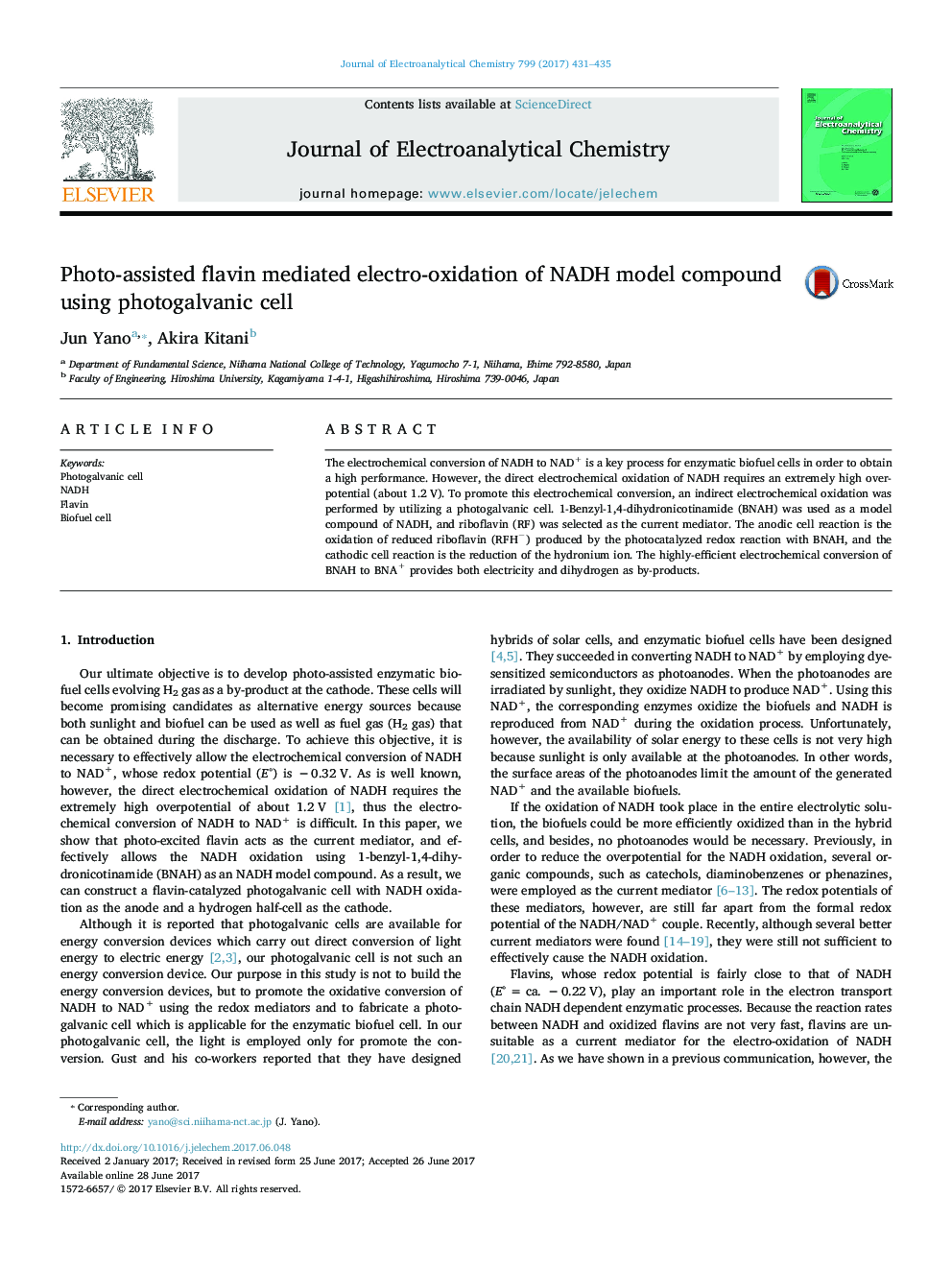| Article ID | Journal | Published Year | Pages | File Type |
|---|---|---|---|---|
| 4907772 | Journal of Electroanalytical Chemistry | 2017 | 5 Pages |
Abstract
The electrochemical conversion of NADH to NAD+ is a key process for enzymatic biofuel cells in order to obtain a high performance. However, the direct electrochemical oxidation of NADH requires an extremely high overpotential (about 1.2Â V). To promote this electrochemical conversion, an indirect electrochemical oxidation was performed by utilizing a photogalvanic cell. 1-Benzyl-1,4-dihydronicotinamide (BNAH) was used as a model compound of NADH, and riboflavin (RF) was selected as the current mediator. The anodic cell reaction is the oxidation of reduced riboflavin (RFHâ) produced by the photocatalyzed redox reaction with BNAH, and the cathodic cell reaction is the reduction of the hydronium ion. The highly-efficient electrochemical conversion of BNAH to BNA+ provides both electricity and dihydrogen as by-products.
Related Topics
Physical Sciences and Engineering
Chemical Engineering
Chemical Engineering (General)
Authors
Jun Yano, Akira Kitani,
